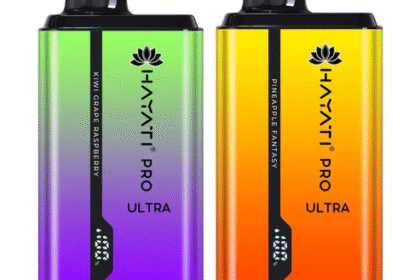Road safety has become a critical concern for urban planners and traffic management authorities worldwide. With the rising number of vehicles and increasing violations at intersections, there is an urgent need for reliable monitoring systems. Enforcement cameras and red light traffic cameras have emerged as effective tools for monitoring and controlling traffic violations, particularly at high-risk junctions. These technologies not only deter reckless driving but also provide concrete evidence for legal enforcement.
What Are Enforcement Cameras?
Enforcement cameras are advanced monitoring systems used to detect and record traffic violations such as speeding, red light infractions, lane misuse, and more. They utilize high-resolution imaging, sensors, and automated number plate recognition (ANPR) to identify vehicles and document offenses accurately.
Types of Enforcement Cameras:
- Speed Cameras: Detect vehicles exceeding speed limits.
- Bus Lane Cameras: Monitor vehicles misusing dedicated lanes.
- Red Light Traffic Cameras: Focus specifically on vehicles that run red lights at intersections.
- ANPR Cameras: Track vehicle movement and automate ticketing.
Understanding Red Light Traffic Cameras
Red light traffic cameras are a specific type of enforcement camera installed at intersections. Their primary function is to capture vehicles that enter an intersection after the traffic signal turns red. These cameras are usually triggered by sensors embedded in the road, which activate when a vehicle crosses the stop line illegally.
How They Work:
- Sensors detect a vehicle crossing after the light turns red.
- Cameras capture multiple images and/or video of the offense.
- Timestamp and location data are attached to the visual evidence.
- License plate recognition identifies the vehicle owner for penalty issuance.
Benefits of Enforcement Cameras
1. Improved Compliance
Enforcement cameras act as a deterrent. Drivers are more likely to obey traffic signals and speed limits when they know they’re being monitored.
2. Reduced Accidents
Red light traffic cameras significantly reduce the number of collisions at intersections by discouraging reckless driving behaviors.
3. Evidence Collection
High-quality footage from these cameras aids law enforcement in prosecuting offenders, resolving disputes, and even investigating hit-and-run cases.
4. Efficient Resource Allocation
Automation reduces the need for traffic police presence at every junction, allowing human resources to be allocated more effectively.
Legal and Privacy Considerations
The use of enforcement cameras often sparks debate about surveillance and personal freedom. While they are essential for safety, there must be strict regulations regarding data use, storage, and access.
Important Considerations:
- Public Notification: Signs should inform drivers of camera presence.
- Data Protection: Data must be encrypted and access-controlled.
- Appeal Rights: Offenders should be allowed to contest fines with clear procedural transparency.
Future Trends in Enforcement Technology
The integration of AI, machine learning, and real-time analytics is making enforcement cameras smarter and more adaptive. Future systems will likely:
- Predict traffic congestion before it happens
- Detect distracted driving or seatbelt violations
- Integrate with city-wide intelligent traffic management systems
How ALPR Complements Red Light Traffic Cameras
When used together, automatic license plate recognition enhances the effectiveness of red light traffic cameras by:
- Identifying repeat offenders: ALPR logs license plates, allowing authorities to track vehicles with multiple violations.
- Speeding up enforcement: Fines can be issued without manual intervention.
Improving evidence collection: Combined video and plate data strengthen legal cases and reduce contestation.
Benefits of Smart Traffic Enforcement Systems
Improved Road Safety
Studies show that intersections equipped with red light traffic cameras experience fewer severe collisions. The presence of these cameras discourages reckless driving.
Efficient Traffic Law Enforcement
With ALPR, authorities can:
- Instantly verify vehicle registration.
- Catch stolen vehicles or those linked to crimes.
- Reduce administrative overhead and manual data collection.
Data-Driven Decision Making
These systems generate valuable traffic data, helping city planners and enforcement agencies make informed decisions about road design, traffic flow, and resource allocation.
Challenges and Considerations
While the benefits are substantial, there are also challenges to address:
- Privacy Concerns: Public surveillance can raise civil liberty questions. Proper data handling and legal frameworks are crucial.
- System Maintenance: Camera systems must be regularly calibrated and maintained to ensure accuracy.
False Positives: Environmental factors like rain, glare, or license plate obstructions may affect performance.
Conclusion
Enforcement cameras, particularly red light traffic cameras, are transforming road safety management. By combining real-time surveillance with automated evidence collection, they help enforce laws more effectively, reduce traffic accidents, and ensure safer driving behavior. As technology continues to evolve, these systems will become even more integral to smart city infrastructure and modern traffic control solutions.
FAQs
Q1. Do enforcement cameras work 24/7?
Yes, most modern systems operate continuously and can capture violations during day or night using infrared and motion sensors.
Q2. Can red light traffic cameras issue tickets automatically?
In many jurisdictions, once a violation is recorded and verified, an automated system issues a ticket to the registered vehicle owner.
Q3. Are enforcement cameras always accurate?
While highly reliable, occasional errors can occur due to environmental conditions or technical faults. This is why appeal processes are essential.
Q4. What happens to the recorded data?
Data is typically stored securely and only accessed by authorized personnel. It is often used for legal evidence, analytics, or auditing.
Q5. Are there alternatives to enforcement cameras?
Yes, alternatives include increased police presence, traffic calming measures, and public awareness campaigns. However, these often lack the efficiency and scalability of automated systems.



